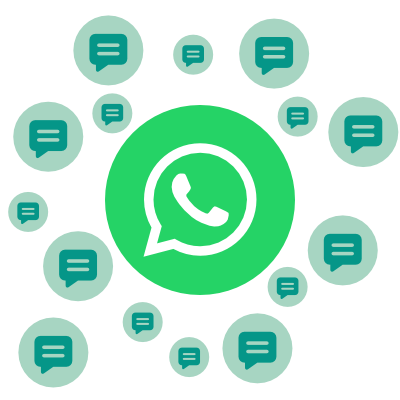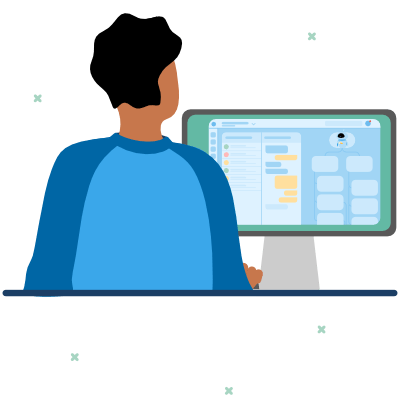In 2022, Meta introduced a new feature: predefined reply buttons for the WhatsApp Business Platform. In the following, we'll explain how they work, and why you should integrate them into your customer communication.
Interactive buttons have long been a popular feature on messaging apps. In 2022, Meta brought the feature to the WhatsApp Business Platfom (API) as well. We'll look at how the predefined buttons work, what types of buttons exist, and why you should use them.
Why buttons on WhatsApp at all?
What's easier, typing out a reply on your smartphone or just hitting a button? Exactly! Using buttons in a WhatsApp chat makes the conversation between company and customer easier and faster. However, until recently, WhatsApp only offered numbers, letters, and hashtags as a quick way to guide users in a conversation with a chatbot.
In 2022, WhatsApp rolled out an update to their interactive message templates, and included interactive buttons, officially called predefined buttons.
These buttons make the dialog between bot and user smoother, and eliminate the issue of a dead-end conversation when a user misspells a keyword and the bot doesn't understand the command.
Now, through a few clicks, the customer gets the same result as in a lengthy conversation, thus improving the quality of customer support. Another positive factor should also be considered: WhatsApp Business Platform buttons make conversations between businesses and customers shorter, and companies can spend the time and resources elsewhere.
What are WhatsApp Business Platform buttons?
The predefined buttons are a premium business feature. It's currently only available to companies that use the WhatsApp Business Platform. Users of the free WhatsApp Business app can't use the buttons (as they also can't integrate chatbots).
Meta defines the predefined reply button messages as part of the interactive message templates. As such, businesses have to set up the reply buttons through a message template, which, in turn, has to be approved by WhatsApp before sending it to users.
The buttons can be attached to regular text messages or media messages, and once the template has been approved, businesses can use the buttons in notification messages and in customer service messages.
What types of WhatsApp Business API buttons are there?
WhatsApp currently supports two types of (predefined) WhatsApp Business Platform buttons, quick reply buttons and call-to-action buttons.
Important: you can also set up regular reply buttons for interactive messages that don't require a template or pre-approval. However, these can't be used in template messages, and you have to send them within 24 hours of the last message sent by the user. If you send them outside this window, you'll get an error message.
Quick reply
A quick reply allows your customer to return a simple text message by tapping a reply button. For quick reply message templates, you can include up to three quick reply buttons.
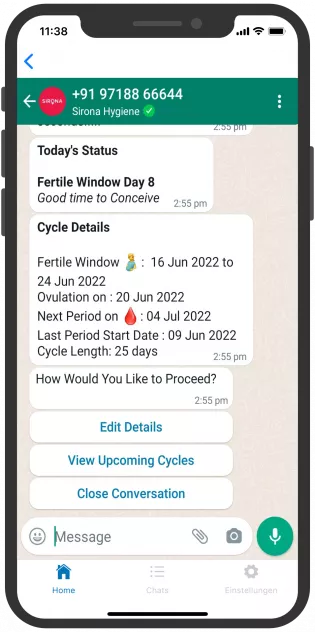
The button for each message can be clicked only once by the customer. Once they click the button, it'll turn gray.
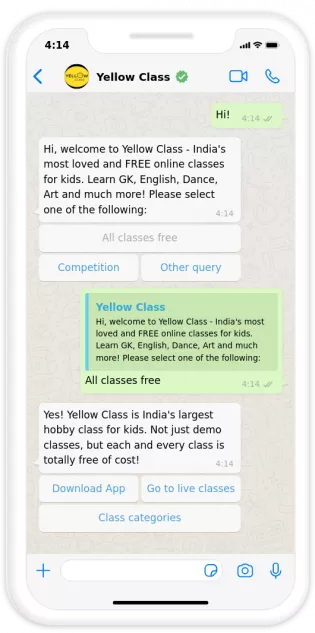
Call-to-action
The call-to-action (CTA) button lets your customer call a phone number and visit a website. You can include up to two buttons with the CTA reply.
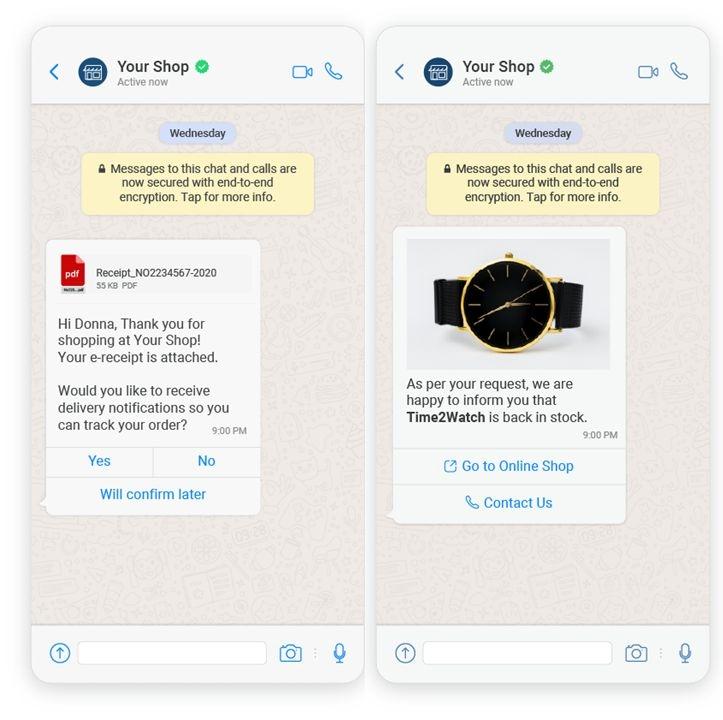
What happens if a user taps a reply button?
When a user chooses a reply button (tapping an answer or calling you back), your business gets a notification. Keep in mind though that a customer could also decide not to tap a button, but write a free text message instead. Make sure that your template is set up for this scenario as well.
For example, you can set up a handover to a human agent in that case.
Who can use WhatsApp Business API buttons?
Currently, only companies using the WhatsApp Business Platform can use the interactive buttons.
The easiest way to gain access to the Platform is through official Business Solution Providers, such as Sinch Engage. Sinch Engage offers a professional messaging solution that's ready-to-go and requires no coding skills. It doesn't only grant you access to the WhatsApp Business Platform, but also to other messaging channels, such as Instagram Direct, Facebook Messenger, Telegram, and Apple Messages for Business.
It includes an easy chatbot builder, message templates for campaigns, and a unified interface where you can direct conversations from any messaging app to any agent (manually or by auto-routing).
With this professional solution, you'll be able to save resources and scale your customer service at the same time!

